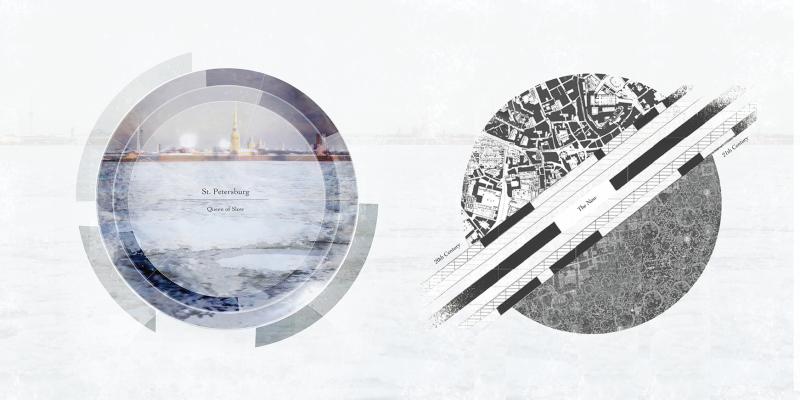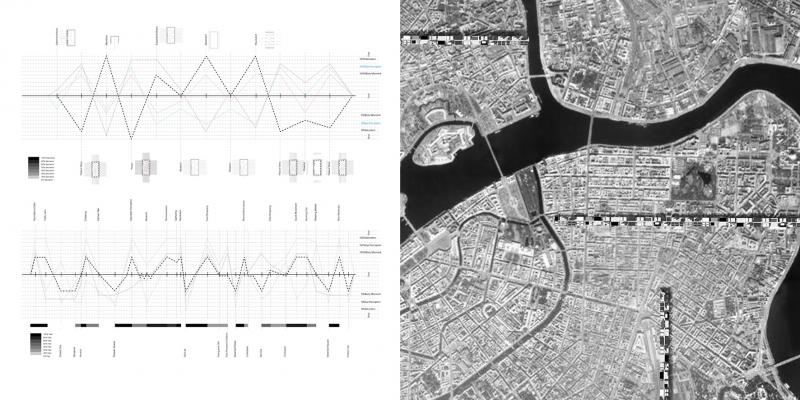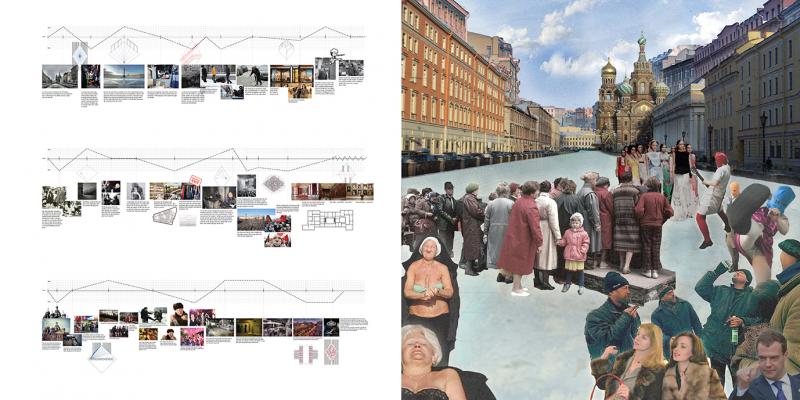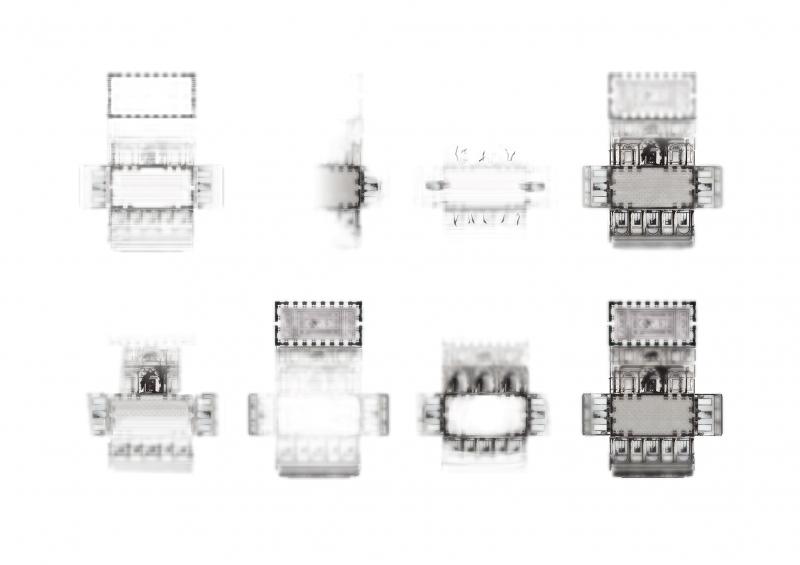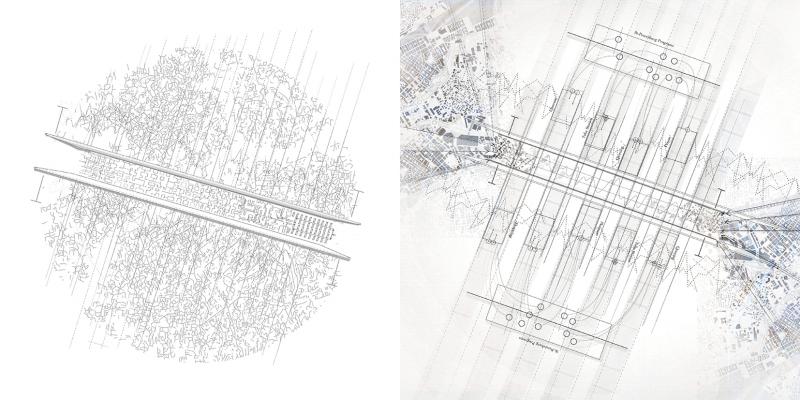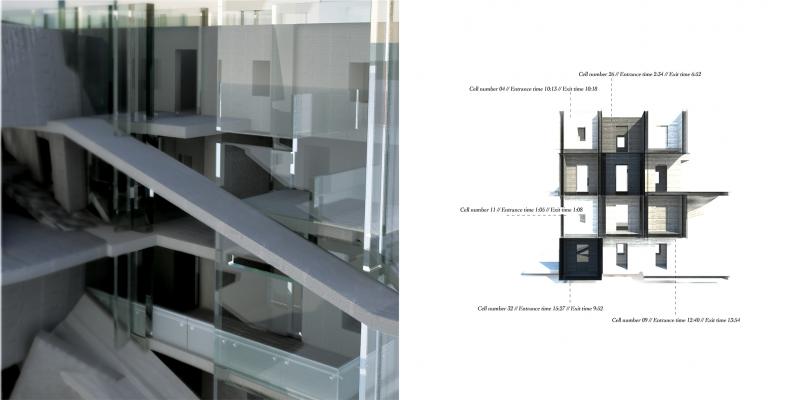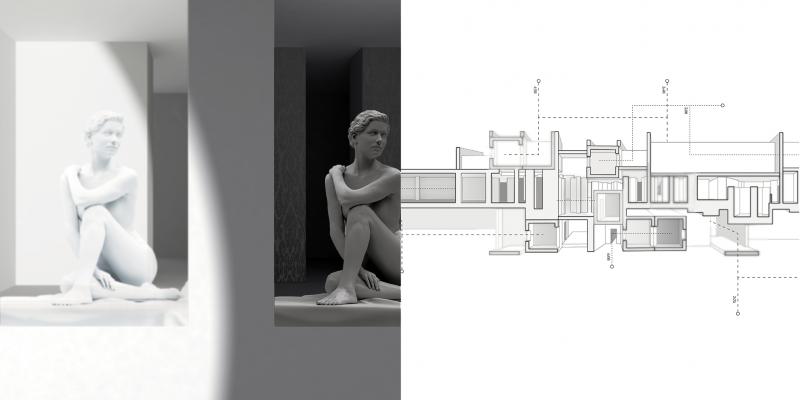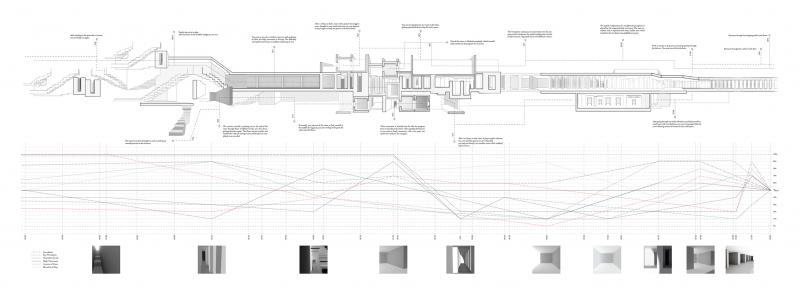Perception model
As you progress along the speed modulator you are forced to slow down. Once the speed is decreased, the reading of the space elongates; we gather more information on the content to the point that the walls appear to swell with layers.



